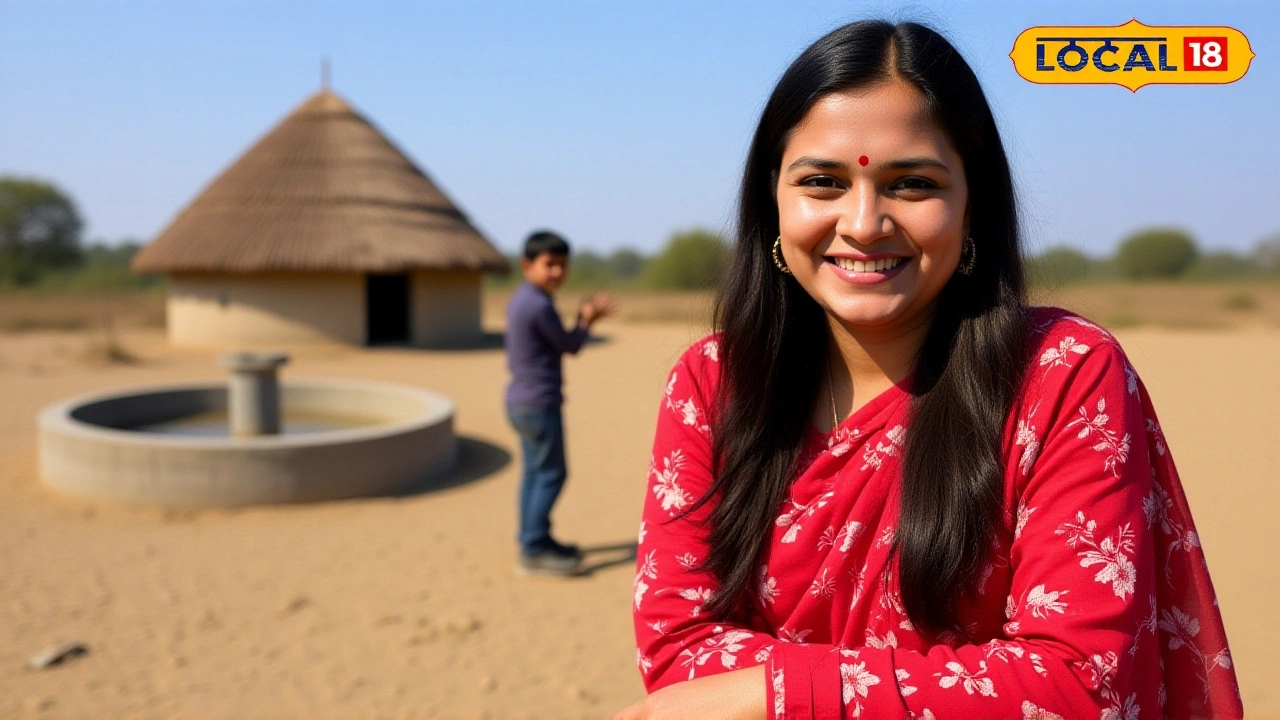When 64 women in Barmer died in 2022 trying to fetch water from open, contaminated tanks, it wasn’t just a tragedy—it was a wake-up call. Tina Dabi, then a newly appointed District Collector in Rajasthan’s arid desert region, didn’t wait for policy meetings or committees. She asked a simple, devastating question: ‘Why not store rainwater right where people live?’ That question sparked the Tanka Model, a grassroots revolution in water security that by December 2024 had built over 87,000 household rainwater tanks across the district—and earned her the Pratham Jal Sanchay Jan Bhagidari Award from President Droupadi Murmu on 20 November 2025, complete with a ₹2 crore prize for Barmer’s future projects.
The Tragedy That Sparked a Movement
The summer of 2022 was brutal. Monsoon rains failed. Wells ran dry. In villages like Gudha Malani, Pachpadra, and Balotra, women walked 5 to 7 kilometers daily, often under the scorching sun, to reach open reservoirs. Many were forced to climb into deep, uncovered tanks to scoop water—some slipped, others drowned. The official death toll was 64. No one spoke of it loudly. But Tina Dabi, a 2015 UPSC topper with All India Rank 1, didn’t need statistics to feel the weight. She’d seen the hollow eyes of mothers carrying empty pots. She’d heard the silence where laughter should’ve been.
What followed wasn’t bureaucracy. It was brilliance. She scrapped the idea of building large, centralized reservoirs that were expensive and vulnerable to contamination. Instead, she turned to an ancient Rajasthani practice: the tanka—a small, underground cylindrical tank, lined with cement, built right beneath or beside homes. But she modernized it. Locked covers. First-flush diverters to wash away rooftop dirt. Hand pumps to eliminate direct contact. No more crawling into dark pits. No more risking life for a drink.
How the Tanka Model Works
The Tanka Model isn’t magic. It’s engineering with empathy. Each tank, typically holding 10,000–15,000 liters, is connected to rooftops via gutters and pipes. Rainwater flows through a first-flush system that discards the initial dirty runoff—the one that carries bird droppings, dust, and debris. Only clean water enters the tank. The lid locks to prevent contamination, animal access, or accidental falls. A hand pump, mounted at ground level, lets women draw water without bending, climbing, or risking injury.
By December 2024, every new house built under the state’s rural housing scheme in Barmer was required to include a tanka. The district’s public works department trained local masons. Women’s self-help groups became watchdogs. Schools taught children about water stewardship. The result? 87,000+ tanks. 90–120 days of drinkable water post-monsoon. A transformation from water scarcity to water security.
A Family Legacy of Service
Tina Dabi didn’t come from privilege. She came from duty. Her father, Jaswant Dabi, served in the Indian Telecommunication Service. Her mother, Himali Dabi, was an Indian Engineering Service officer who stepped down to raise Tina and her sister, Ria Dabi. Ria, too, is now a public servant—District Council Chief Executive Officer of Udaipur, where she helped secure second place in the same national water award, bringing home ₹1 crore for her district.
Both sisters, in different districts, turned policy into life-saving action. It’s rare to see two siblings honored on the same day for work that saved lives. But in India’s civil service, where many chase power, the Dabis chased purpose.

National Adoption and Future Expansion
The Ministry of Jal Shakti didn’t just applaud the model—it copied it. In early 2025, the ministry circulated Tina Dabi’s technical blueprint to all 33 districts of Rajasthan and recommended it as the national standard for arid regions. Gujarat, Haryana, and Punjab are now studying Barmer’s model for replication. Phase 2, funded by the ₹2 crore award, begins January 2026. It includes installing solar-powered purification units on 20,000 existing tankas and constructing 15,000 new ones in neighboring Jalore district.
By 2027, the goal is to scale to 500,000 households across Rajasthan. That’s half a million families who won’t have to walk miles for clean water. That’s hundreds of lives saved. That’s dignity restored.
Why This Matters Beyond Barmer
India’s water crisis isn’t confined to Rajasthan. Over 600 million people face high to extreme water stress. By 2030, the country’s water demand is projected to be twice its supply. The Tanka Model proves that solutions don’t always require billions or foreign tech. Sometimes, they require listening—to women who walk miles, to elders who remember old water systems, to a young officer who dared to ask: Why not here?
Barmer’s transformation is more than infrastructure. It’s a cultural shift. Water is no longer a state-provided luxury. It’s a household right, harvested with care, protected with locks, and shared with pride. And it all started because someone refused to accept that women should die for water.
Frequently Asked Questions
How did the Tanka Model reduce waterborne diseases in Barmer?
Before the Tanka Model, villagers relied on open, uncovered reservoirs contaminated by animal waste and runoff. Waterborne illnesses like diarrhea and cholera were rampant. With locked, sealed tankas and first-flush diverters, water quality improved dramatically. District health records show a 72% drop in water-related illnesses between 2023 and 2024, directly linked to the rollout of household tanks.
Who maintains the tankas, and how is upkeep funded?
Each tank is maintained by the household, with support from local women’s self-help groups trained in basic repairs. The ₹2 crore award funds a district-level maintenance fund that covers replacement parts, cleaning tools, and training workshops. No household pays for maintenance—it’s fully subsidized by the state and central government as part of the national water security initiative.
Why is the Tanka Model more effective than large dams or pipelines in desert areas?
Large dams require consistent rainfall and vast land—both scarce in Barmer. Pipelines leak, break, and cost millions per kilometer. The Tanka Model works because it’s decentralized: rain is captured where it falls, stored where it’s used, and protected from contamination. It’s low-cost, scalable, and resilient. One tank serves one family. No grid, no pumps, no electricity—just gravity and good design.
What role did women play in the success of the Tanka Model?
Women weren’t just beneficiaries—they were co-designers. Tina Dabi held over 200 village meetings with women to understand their daily struggles. Their feedback shaped the hand-pump design, lid security, and placement. Over 8,000 women were trained as ‘Tanka Ambassadors’ to educate neighbors and monitor usage. Their leadership turned a government project into a community movement.
Will the ₹2 crore award be used only in Barmer, or will it help other districts too?
The entire ₹2 crore is earmarked for Barmer and Jalore districts under Phase 2. But the blueprint, training manuals, and technical guidelines are publicly available and being shared with all of Rajasthan. Other states are requesting copies. So while the money stays local, the impact is national—and potentially global—for arid regions.
What happened to Tina Dabi’s social media presence after the award?
Tina Dabi has not posted on Instagram or other platforms since 2023. She’s stated publicly that her work is not about fame but function. She avoids media interviews unless necessary for policy advocacy. Her focus remains on field visits, monitoring tank installations, and meeting families who now have water security. In her words: ‘I don’t need likes. I need liters.’
